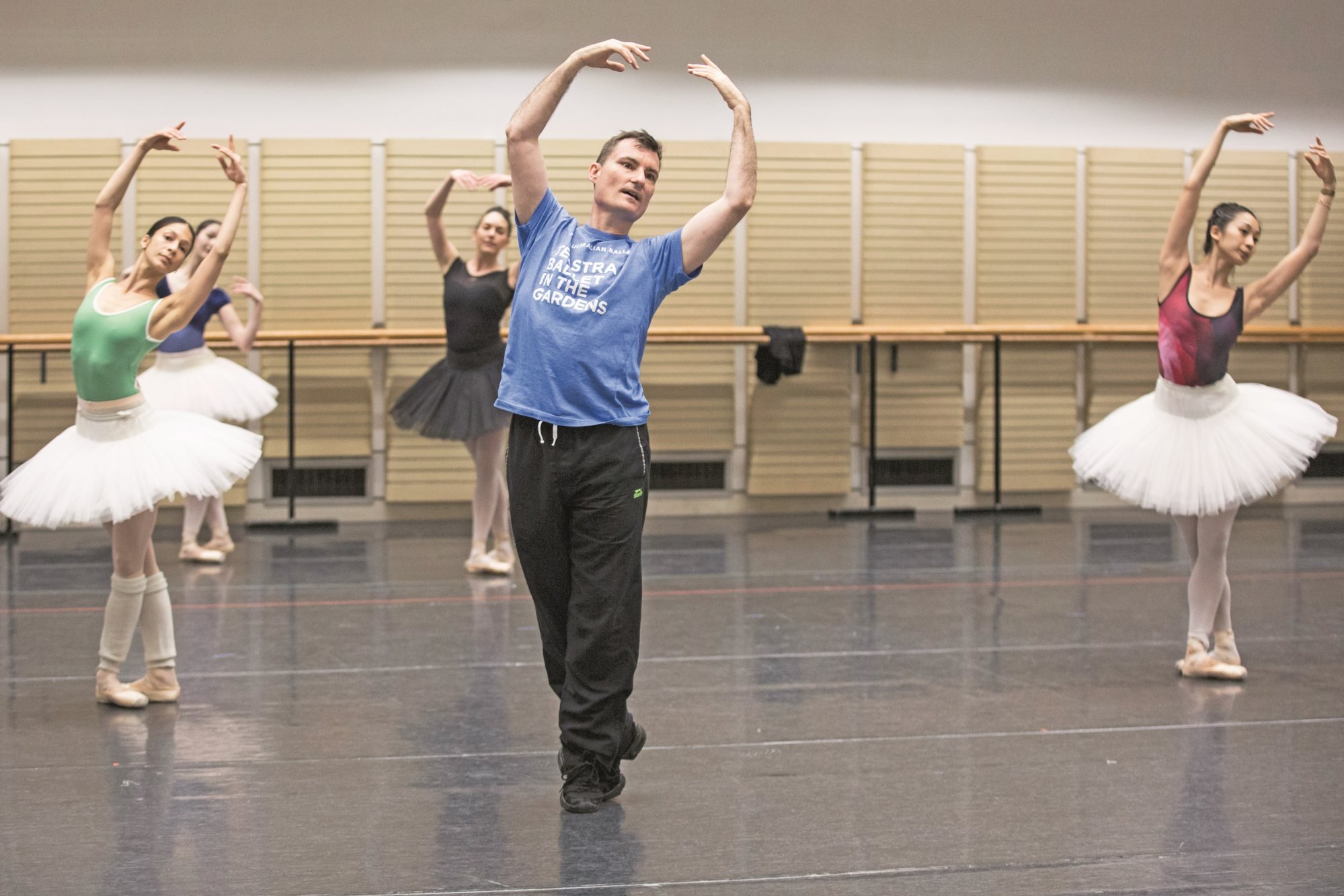“Most of these questions came at the end of the night after a raucous post-performance party,” says McAllister via video call from his home city, Perth, where he’s filling the artistic director role at the West Australian Ballet.

When McAllister was approached by publishing company Thames & Hudson to write a follow-up to his acclaimed 2020 memoir, Soar: A Life Freed by Dance, which he wrote with journalist Amanda Dunn, he thought a book debunking a few ballet myths would be a good idea.
“I was in Finland, locked out of Australia because of Covid-19, when the idea for a book demystifying the things that people think they know about ballet, and some of the provocative questions that people ask you as a dancer, came to me. A sort of peek behind the curtain.”
Ballet Confidential, released in 2023, is the result.
“My partner [playwright and director Wesley Enoch] is a serious writer and also an academic while being extremely creative. He told me, ‘Just sit down and write for two hours a day. Some days, it will be five hours. Sometimes, you’ll be sitting there for two hours just waiting for something.’
“My hope is that ballet lovers will love it but they should also give the book to their friends who don’t get it,” says McAllister, who will be in Hong Kong in March to discuss the book at the 23rd Hong Kong International Literary Festival.

Born in 1963 in Perth, Western Australia, the middle child in a Catholic family, McAllister joined The Australian Ballet in 1983, quickly pirouetting his way up the ranks, taking on principal roles in The Sleeping Beauty, Don Quixote, Coppélia and Romeo and Juliet, among others.
The road to the top had some bumps, however. For boys growing in sports-mad Australia in the 1970s – and some might say even today – cricket or football were the “gender appropriate” extracurricular activities.
“I wasn’t good at sports because I had no eye-hand coordination,” he says. “Catching, throwing or hitting a ball was a nightmare.”

Dancing was his true passion.
“I was six when I told my teachers I was learning ballet,” he recalls. “The head nun called my parents and said, ‘This is terrible.’”
And being the only boy in his ballet class led to some schoolyard bullying. “It was pretty tough.”
His family, however, were not entirely surprised by his love for dance.

“When I found the technique of learning ballet, it was a big ‘aha’ moment. Everything made sense – I had found my thing,” says McAllister. “Some people say school is the best years of their life. For me, the ballet studio was where I came alive.”
In his book, McAllister talks about everything from gender bias to the evolution of pointe shoes, debunking some of the myths that dancers are in constant pain.

“Like any elite athlete, you’re pushing your body beyond what’s generally needed,” he says. “But you train for that.”
Dancers today, he adds, are also screened for potential injury problems. “We do a lot of preventive training instead of waiting until you get an injury, and we’ve eliminated a lot of injuries that used to be quite common,” he says, citing metatarsal fractures as an example.
Unlike in the past, where a dancers’ career ended at 30, ballerinas today are dancing into their early 40s. “They are dancing well and with strength and dynamism for much longer.”

“From the minute I joined the [Australian Ballet] company, I was always trying to be thinner.
“I remember one time I had a bad gastro bug and was off for a couple of days and drank only water. I lost a lot of weight quite dramatically and the ballet staff were like, ‘Wow, you look great.’ Today, people would ask, ‘Are you OK?’”

The power of diet has also been harnessed. “Today, it’s about carbs before the show and protein after … it makes so much sense.”
Having spent so much of his life in the world of ballet, it comes as no shock that his “retirement” has been anything but. He recently returned from New Zealand, where he held the role of interim artistic director with the Royal New Zealand Ballet.
“Life Behind the Curtain with David and Septime”, with David McAllister and Septime Webre, artistic director of the Hong Kong Ballet, Hong Kong International Literary Festival, 6.30pm-7.30pm, March 8, The Jockey Club Studio Theatre, Fringe Club, 2 Lower Albert Road, Central. Tickets are HK$498 (US$64) and available on Eventbrite.

